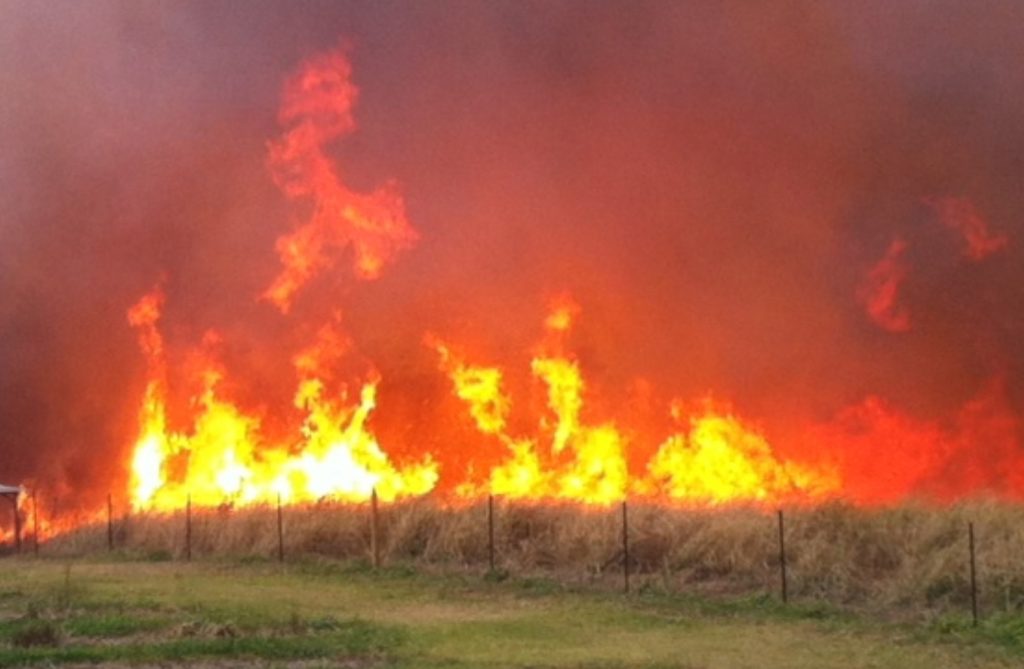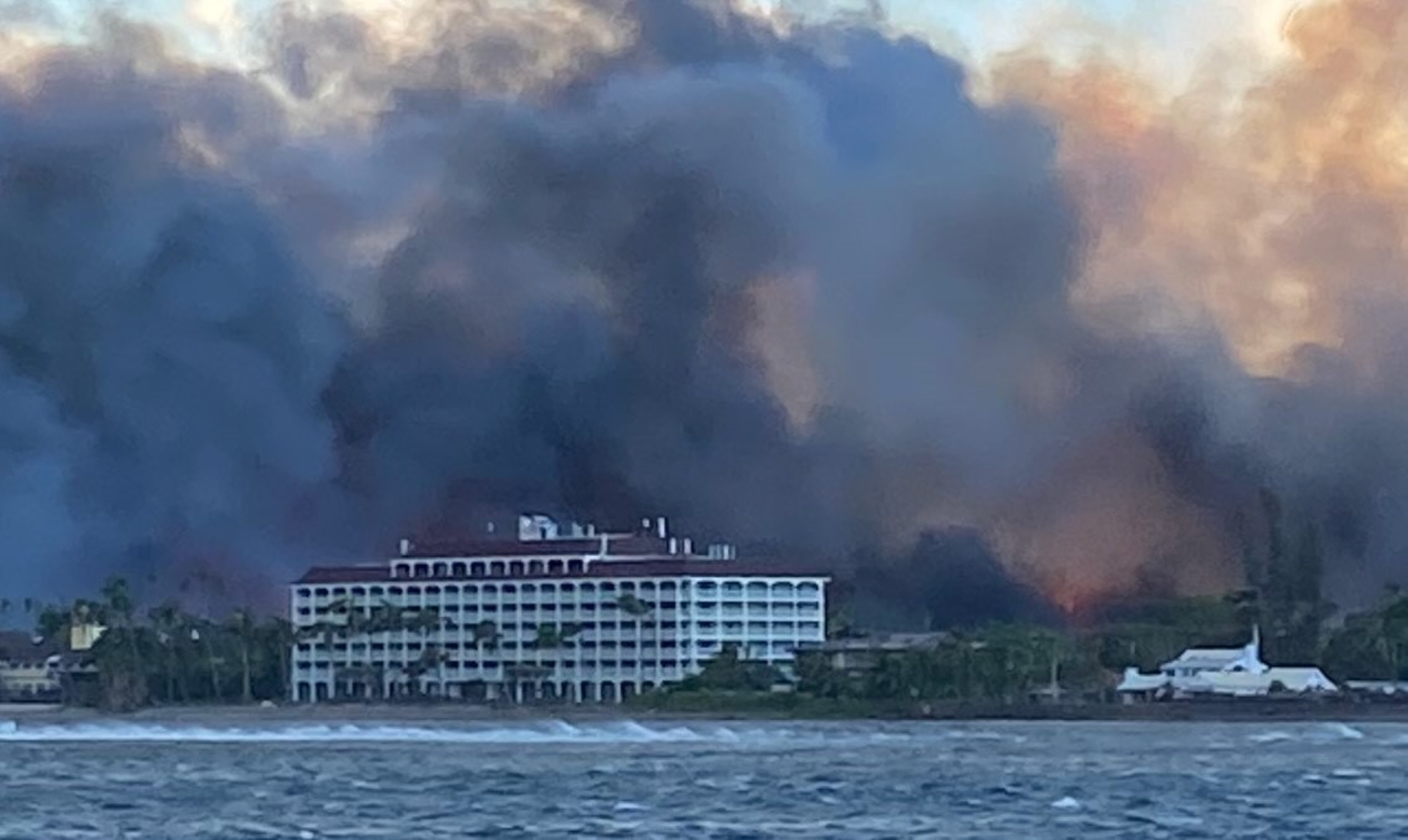‘Our goal is simple — stop wildfires before they become disasters’
Hawai‘i Gov. Josh Green on July 18 signed an emergency proclamation, activating the Hawai‘i National Guard for Operation Hoʻopauahi to be ready when first responders need help battling wildfires anywhere in the state.

It’s timing is not a coincidence. Much of the state is more than parched, including the Big Island, where nearly 90% of the island is abnormally dry or experiencing some level of drought.
That trend is expected to persist and even worsen for some areas of the islands during the next few months, especially the hottest — and possibly driest — months of summer August and September, increasing ignition risk for wildfires.
“Our goal is simple — stop wildfires before they become disasters,” Hawai‘i National Guard Commander-in-Chief Green said in an announcement for his emergency proclamation, calling the move a proactive step that will “help save lives, protect property and strengthen our state’s overall emergency response.”
Operation Hoʻopauahi — which means “to extinguish fire” in Hawaiian — will initially keep a Hawaiʻi Army National Guard CH-47F Chinook helicopter crew mobilized to respond as soon as the point of wildfire ignition.
The copter and its crew will be immediately dispatched to provide aerial firefighting support in any of the state’s counties, increasing capacity to contain and extinguish a fire in its early stage.
“This authorization and Operation Hoʻopauahi also will allow us to quickly and effectively activate other Hawaiʻi National Guard resources such as evacuation teams, traffic control and security missions,” added Hawaiʻi Adjutant General Brig. Gen. Stephen F. Logan in the governor’s announcement. “This is an opportunity where the Guard can help to enable a safe, secure and thriving state.”
The Hawaiʻi Emergency Management Agency and Hawaiʻi National Guard are consistently in communication with county emergency managers and stand ready to offer support when needed.
Green’s latest emergency proclamation comes on the heels of multiple wildfires that ignited during the first half of July throughout Hawaiʻi, including two on O’ahu that required evacuations; one of which also resulted in the death of a 94-year-old woman, who suffered smoke inhalation and second-degree burns.
It’s also a pre-emptive strike to make sure the state is ready to respond, especially since weather outlooks for the next few months agree there is significant danger of wildfire in much of the state, especially Oʻahu, Maui and the Big Island.

The National Interagency Coordination Center monthly/seasonal outlook issued July 1 for the months of July through October — compiled using data and information from the National Oceanic and Atmospheric Administration, National Weather Service and Hawaiʻi Volcanoes National Park — projects above normal significant fire potential, especially in leeward areas of the state, from Oʻahu south through the Big Island.
Average temperatures during the next few months should also generally be above normally, which falls in line with typical Hawaiʻi summer weather as August and September tend to be the hottest months of the season.
Precipitation, on the other hand, looks to be more hit and miss, the outlook says, as impacts from tropical cyclones are expected to be below normal for the next few months, meaning much of the state likely will be drier.
Some modeling, however, does suggest a slightly wetter signal in the northern tier of the islands, such as Kauaʻi.
The National Weather Service Climate Prediction Center concurs, forecasting an increased chance of below normal precipitation through October in already parched parts of the state, but less of a dry signal for Oʻahu and Kauaʻi.
“As of July 15, 2025, the U.S. Drought Monitor shows that approximately 53% of the state is experiencing moderate, severe or extreme drought conditions,” Green’s emergency proclamation says. “An additional 33% of the state is experiencing abnormally dry conditions.”
About 87% of the Big Island is experiencing abnormally dry conditions or some level of drought as of July 15, according to the U.S. Drought Monitor, with 56% under moderate to extreme drought.
There’s about 3% of the island in the South Kohala/Hāmākua area that’s most parched, experiencing extreme drought that has persisted for at least a couple of weeks now.
In comparison, about 41% of Kauaʻi is seeing abnormally dry conditions or some level of drought as of this week, with the about 9% of drought-stricken area under moderate drought.

The Climate Prediction Center forecast through October calls for drought to persist in those areas already suffering, with other already abnormally dry places on the Big Island, Maui, Lānaʻi and Molokaʻi worsening into drought conditions.
As the state dries out more and drought expands, so, too, will the amount of fuel available to consume for any wildfire that sparks.
More moisture-deprived vegetation and plants that couldn’t take the stress of drought or dry conditions dying — both drying out even more — will become easy pray for any flames looking for a snack.
“Dry brush is widepread throughout the state,” Green’s proclamation states.
All of those factors together, as well as increasing temperatures during at least the next couple of months bringing more heat to the state — and less rain in the forecast — will only benefit wildfires, turning much of the state into a tinderbox that could go up in flames at any moment.
“Even small wildfires may quickly intensify and expand to threaten entire communities, requiring widespread evacuations and government response,” the emergency proclamation says.
The catastrophic wildfire that destroyed Lahaina 2 years ago in August 2023, killing more than 100 people and causing $5.5 billion in property damages, is one of the deadliest wildfires in U.S. history.
It’s also a powerful reminder about how wildfires are “high-risk threats to the people of Hawaiʻi.”

“Drought and other conditions exist which contribute to an increased risk of severe wildfires, and which constitutes an imminent danger threat of an emergency or disaster throughout the state” Greeen’s proclamation states.
As seen already with the fires earlier this month on Oʻahu and elsewhere in the state, considerable government resources will likely be “required to mitigate these risks and to contain such wildfires as they ignite to protect the life, health and safety of the public.”
Green’s emergency proclamation is in place through Sept. 16.
You can read the full text of the proclamation online.
News reporter Nathan Christophel contributed to this story.











